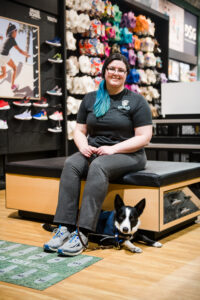
A new article by Jessica Downey from Petsrader.com addresses the issue of separation anxiety in new puppies and pet dogs. The article suggests that there are two steps that can help reduce this anxiety. However, experts take issue with the characterization of separation anxiety as a habit and the notion that it can be fixed with just one training session.
Separation anxiety is actually a panic disorder and a very complex issue. It is important to understand that it is an emotional response lead by stress hormones, not just a habit.
The first step is to understand what separation anxiety means for your new puppy or pet dog. A puppy with separation anxiety may become upset even if it has toys and chews, as it is not a distraction issue.
A dog trainer has shared a video on TikTok showing how he helped an anxious puppy called Dino. The video claims that the puppy was transformed from a barking mess to a calm and quiet dog after one training session. However, certified Separation Anxiety experts say that this is a red flag, as true separation anxiety can’t or shouldn’t be fixed in one session. This is merely a band-aid, not a permanent fix.
The trainer in the TikTok video says that he puts the puppy in the crate and walks away, allowing him to whine, but only when he stops whining does he get what he wants. According to him, he is teaching the puppy that good behavior is what gets him what he wants.
Separation anxiety experts agree, there is no such thing as good or bad behavior, only desired or undesired behavior. Assigning ethics to behavior is not the right way to approach the issue. Be cautious of learned helplessness, as it can have long-term side effects, such as a lack of emotional responsiveness.
In conclusion, while the article offers some tips on reducing separation anxiety in new puppies and dogs, it is important to understand that it is a complex issue that cannot be solved with one simple solution. It is important to approach it with care and a thorough understanding of the issue.
Join one of our courses and start shaping your dog to be happy and obedient today. We make sure every class is easily understood, and that all students reach the same level of expertise needed for their dog.
Address:
1131 Westminster Dr
Breinigsville, PA 18031
Phone: (484)619-3554
Email: Caitlin@CaitlinsAnimals.com
